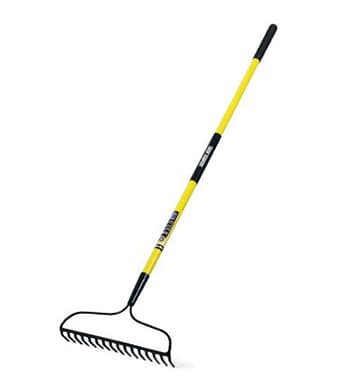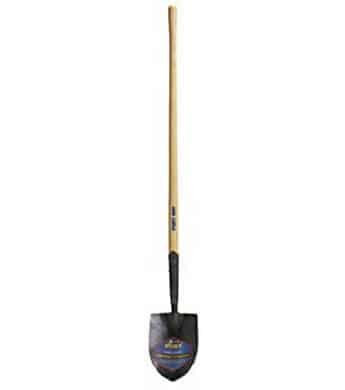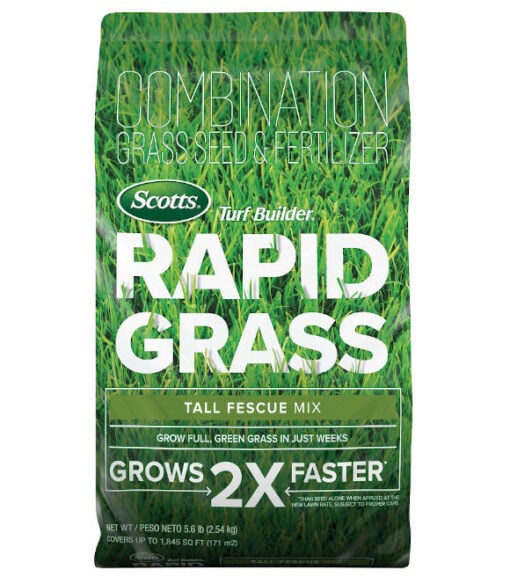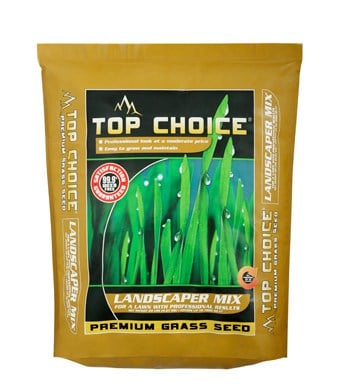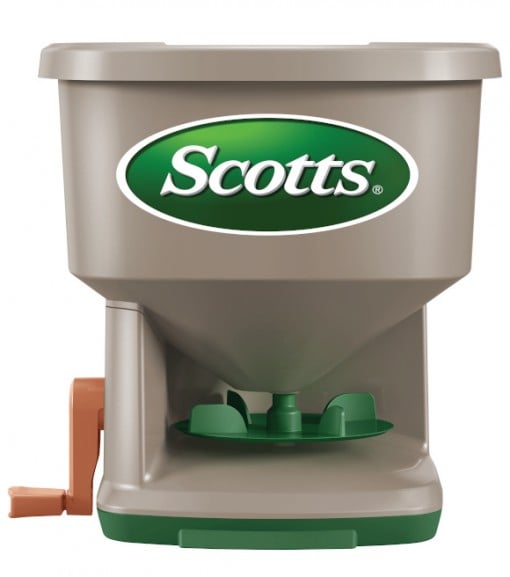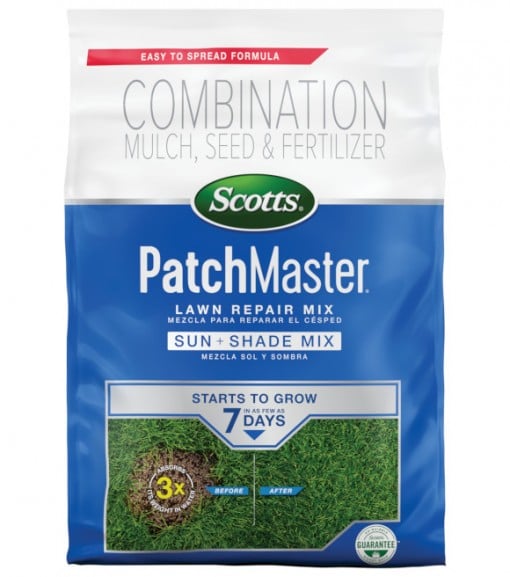Improve your curb appeal with a well-manicured and welcoming green lawn. Planting grass seed is an affordable and fulfilling way to grow a lush landscape. If you are ready to take your project off the ground, our grass seeding guide provides you with step-by-step instructions on how to plant grass seed, the easy way.
Planting Tools for Lawn and Garden
Starting from scratch on a new lawn can seem time-consuming and labor intensive, but with the right lawn care tools, you can streamline new grass installations and have fun!
Before ordering your grass seed, stock up on all the necessary seeding tools. Here are the most common recommended tools that may be needed for putting in your new lawn:
- Lawn mower
- Spreader
- Lawn roller
- Power tiller
- Garden rake
- Broom rake or Landscape Rake
- Shovel and/or pickaxe
- Sod cutter (optional)
- Oscillating sprinkler/sprinkler system (optional)
With the right systems in place, you can focus on the seeds themselves and any nutritional requirements and amendments needed to maintain a beautiful lawn. Assemble the following materials:
- Grass seed
- Lawn starter fertilizer
- Soil conditioner
- Herbicide (optional)
What Is the Perfect Time for Lawn Seeding?

Choosing the right time to plant grass seed varies by region and climate. Seeding at the right time allows grass seed to properly germinate, grow its roots, and transform your new lawn into a luscious green paradise.
The perfect time for lawn seeding depends on the type of warm-season grasses and cool-season grasses you choose. Each type of grass caters to either warm or cool climates and has a different ideal time of planting.
- Cool-season grasses are ideal for regions with cooler weather such as the North, Midwest, and Pacific Northwest in the United States. Cool-season grasses are meant to be planted in the late summer, early fall, or early spring.
- Warm-season grasses are perfect for southern states in the United States with hotter weather. Warm-season grasses are best planted in the early summer when the soil is still warm.
Site Preparation
Vibrant green grass starts with a healthy foundation. Eliminate the mounds and dips in your yard by grading the site before you start planting to maintain proper water drainage and facilitate mowing. Experts recommend sloping the lawn away from the building at a rate of 1 to 2 percent. A higher rate increases the risk of drying out your lawn.
Pro tip: Maintain a leveled, properly compacted, and aerated site to avoid puddles when watering. Puddles can make mowing more difficult and increase the risk of plant disease.
For most site preparation of new lawns, you will need to remove the old turf. There are a few ways you can do this:
- A sod cutter is an easy-to-use machine that mechanically removes the old turf at the roots, so you can literally haul away rolls of sod sections. Sod cutter rentals are affordable and can save you time and labor. Consider that a sod cutter is a heavy piece of power equipment. If your lawn area is smaller than 1,000 square feet or has many turns or irregular shapes, a sod cutter may be hard to maneuver.
- You can use shovels and pickaxes to manually remove the old grass.
- Spraying the lawn with a non-selective herbicide kills all plants it comes in contact with, including grasses and broadleaf plants. If using the spray, make sure to avoid spraying any plants you want alive and follow the label’s instructions.
Soil Preparation
Now, it is time to create the perfect soil environment for seed germination and healthy grass growth. Here are the basics of preparing your soil to keep your lawn healthy.
pH
Soil pH is critical for proper lawn care. The pH refers to the acidity or alkalinity of a solution, ranging on a scale from acidic (0) to alkaline (14) with 7 being neutral. Ideal soil pH levels range between 6.0 to 7.5. Testing your soil’s pH at home is easy to do with an affordable soil test kit. For best results, make sure to test different areas of your lawn including areas with shade and sun, as well as the front and back of your yard.
For greater accuracy, ask your local Cooperative/County Extension Office/Service to test your soil or turn to a reliable soil laboratory. You can also purchase a simple do-it-yourself soil test kit from your local Wilco store.
Testing your soil will determine the levels of pH, potassium, calcium, lime, and gypsum with a few samples of your soil and provide accurate product recommendations.
Soil Amendments
Testing your soil can show you exactly what it needs, pH-wise, to get it up to shape. If your pH is out of balance, soil amendments can come to the rescue. Properly balancing your soil can help improve its nutrient availability.
- High pH levels: Alkaline soil, commonly found in the West, can benefit from elemental sulfur.
- Low pH levels: In acidic soil, commonly found in the Northwest, Southeast, and Northeast, lime can help improve nutrient uptake in your soil.
Fertilizer
A soil test will also determine what nutrients your soil needs. A premium lawn fertilizer can maintain optimal nutrient concentrations for the best grass possible. Lab-based soil recommendations can tell you exactly what nutrients are needed in your lawn starter fertilizer. Keep in mind, states vary in lawn fertilizer restrictions. For instance, some have restrictions on phosphorus fertilizers.
Soil Structure
A lawn’s soil structure is critical for proper germination and plant growth. For instance, soil that is too sandy or heavy and compacted can stall seed germination and growth. Ideally, your soil needs to have the proper aeration and drainage for optimal nutrient retention and uptake.
One easy way to fix your soil structure is to remove any rocks and add organic matter such as compost (about 2 to 4 inches) before planting. If possible, rent a tiller or aerator to restore compacted soil by literally taking out plugs of soil for better aeration and water penetration.
Sourcing Grass Seed
Soil structure is critical to providing a healthy home for your grass seeds, but all will be in vain if you start off with low-quality grass seed. For this reason, it is important to consider your climate and growing conditions to choose the right type of seed.

Warm-Season Grasses
Warm-season grasses thrive during the warm periods of the year in southern regions and become dormant and brown during the cooler months.
Common types of warm-season types of grass include:
- Bermudagrass
- St. Augustinegrass
- Centipedegrass
- Zoysiagrass
- Carpetgrass
Cool-Season Grasses
Cool-season grasses like northern regions and transition zones with moderate summers and cold winters. These grasses can retain their green and vibrant color throughout the year, except for periods of heat and drought when they go dormant and brown.
Common cool-season types of grass include:
- Kentucky bluegrass
- Tall fescue grass
- Bentgrass
- Ryegrass
Seed Blends and Mixes
In some regions, you can choose a mix or blend of seeds that are formulated for your region. Seed mixes are primarily used for lawns in the Pacific Northwest, Northeast, and Midwest, and Pennsylvania states. Seed mix options may include ones meant for grass growing in shade, while others may be formulated for lawns with a mix of shade and sun.
How to Plant Grass Seed
After several hours of preparing your site (labor time depends on the size of your lawn and quality), it is time to get to the main event: planting the seed. The best way to broadcast the seed evenly across your lawn is to follow the seed brand’s recommended seeding rates.
Optimal seeding can be accomplished with a good spreader, as long as you use it right and during a day without windy conditions.

Lawn spreader
- Broadcast spreader: Broadcast spreaders scatter, or “broadcast,” the seed in a fan-like manner over a wide surface area using a rotating component underneath the hopper holes. These are preferred for larger lawns. The fan size depends on the spreader size and how you are spreading your seed. Of course, most seeds fall closer to the spreader and thins out towards the edges of the fan. There are two main types of broadcast spreader:
- Walk-behind
- Handheld
- Drop spreaders: Drop spreaders drop the seeds directly below the spreader. Drop spreaders are perfect for smaller lawns in tight spaces where you might want to fill bare patches.
Raking and Rolling Lawns
Now that you have spread the seeds evenly across your site, gently rake the soil to barely cover them (about ¼ inch of soil deep). Keeping the seeds just below the surface gives them the right amount of sunlight needed to speed up the germination process.

After raking the soil to cover the seeds, go over your lawn with a lawn roller to make sure the grass seeds make good seed-to-soil contact for germination to begin. Proper seed-to-soil contact ensures proper moisture and nutrient absorption.
Overseeding

Overseeding refers to the process of planting grass seed over an existing lawn without any site and soil preparation as mentioned above. Overseeding an existing lawn can have numerous benefits for your lawn including:
- Help fill in bare patches
- Produce thicker and denser lawn grasses
- Improve the color and uniformity of your lawn
Overseeding is simple. All you have to do is broadcast the grass seed over your lawn and apply water, the same as you would for a new lawn.
Anatomy of a Grass Plant
Knowing what your grass looks like can help you get a better idea of the proper lawn care your yard deserves.
Here is the structure of a grass plant:
- Blade: A structure composed of the grass stem, sheath, and nodes.
- Crown: The base of the grass where growth begins.
- Rhizome: A horizontal below-ground stem or runner.
- Roots: Ground system that provides nutrients and water to the grass through absorption.
- Stolon: A horizontal above-ground stem or runner.
- Seed head: The flower of the grass plant.
- Tiller: Composed of sheaths and leaf blades, the stem, and the seed head (on some occasions). They extend from the crown of the plant and above.
Watering Requirements
Water is your new grass’s life force. However, too much or too little watering can render all your work useless. For grass seeds and seedlings, keep the top 2 inches of soil moist but not drenched. For a newly seeded lawn, lightly spraying the ground 2 to 3 times per day is enough. Ideally, water your new lawn in the morning to reduce its evaporation and conserve water.
For best results, avoid over-watering or developing puddles in depressions in your landscape. If standing water is a problem, you may need to improve your site’s drainage. However, if some areas of your lawn wilt rapidly, it could mean that a large rock sits below the surface and is restricting root growth into the soil.
A sprinkler system can ensure your new lawn gets the right amount of water. Make sure to regularly check each sprinkler head for clogging. If you own an oscillating sprinkler, make sure that the holes do not become clogged, which can cause uneven watering.
When your seeds have germinated and the seedlings are poking through the fertile ground, you can slowly scale back your watering frequency. Instead of the light spray used in the seedling stage, you will need to begin heavy waterings to support the growth. As the grass begins to mature and grow tall, you can diminish the watering.
Early Stages

A seed’s early stages depend largely on the grass type you have planted. Germination phases can range between 5 to 21 days. Once germinated, new grass seed can take between 4 to 10 weeks to develop a strong root system. Overall, grass reaches maturation after a complete season. Only then, is it strong enough to handle heavy foot traffic.
Only until your seedlings have reached about 1 inch will you be able to tell if you have any bare spots. Of course, spreading seed is not an exact science, which can lead to some barren areas if you spread the seed unevenly. You can reseed these areas several times until your grass seedlings are thick and full.
Mowing and Maintenance

Once your landscaping project has fully taken root, the job is not done. Hold off on mowing your new grass until the grass reaches 3 inches tall. It is best to cut dry grass for easier mowing. Generally, avoid mowing more than one-third of the grass blade per mowing. Cutting any more can weaken the plant’s health.
Young grass will not be ready for heavy foot traffic for an entire season after planting. Maintain your grass by watering regularly. The frequency depends on how often it rains. Ideally, lawns should get about 1 inch of water per week.
For cool-season grasses, fertilize four to eight weeks after seed germination. For warm-season lawns, feeding can start around spring. After using lawn starter feed, you may need to fertilize up to 4 months a year depending on your soil’s nutrient requirements (see soil test results). Test your soil every 3-4 years to account for any changes.
Shop Wilco for Grass Seed and Seeding Tools
Turn any uninviting patch of dirt into a rich and green meadow.
Shop for high-quality grass seed at Wilco farm stores. We carry seed from the world’s leading seed brands including:
- Top Choice
- Scotts
- JB Instant Lawn
Find premium seeds for any type of growing region and high-performance lawn food to maintain a thick and abundant foliage or repair bare spots. It has never been easier to keep your new grass in tip-top shape.


